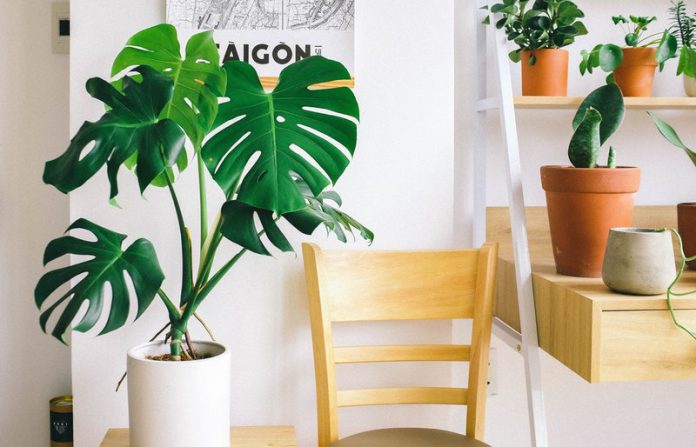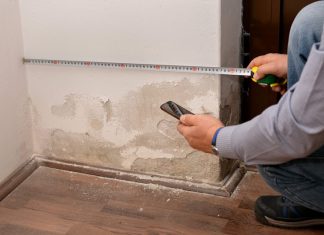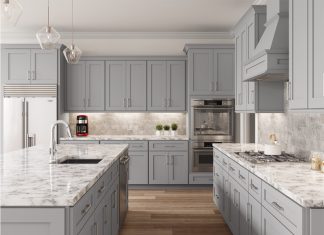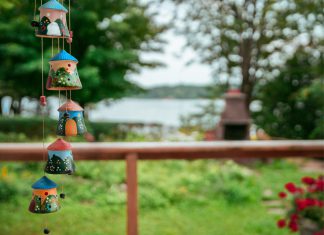Indoor plants are a great way to breathe clean, healthy air. You can also enjoy a peaceful, green environment of well-being that brightens any space and home. Many people have poor luck with houseplants. Or worse, the “black thumb”. It’s a common problem faced by novice and seasoned gardeners alike. We always strive to provide you with the best source or advise for your plants and garden.
Is this sounds familiar? You bring a new pair of plants home from your local nursery, hoping that things will be different. It is the star of the show. You can water it. It seems to be fine for a few weeks. Then the leaves begin to fall or turn brown. Then your beloved plants begin to wilt before your eyes.
It can be difficult and confusing to figure out the needs of your plant. Over-exuberance can cause plants to die just as easily as neglect. We will discuss the causes of sudden death in plants and what you can do to save them.
1. Require more Light
Direct sunlight can actually be 100 times brighter than ambient light in an artificially lit room. Were you aware of that? Because the human eye is so adaptive, changes in light levels can seem very small. You may not be aware that your plant isn’t in the right spot. Lack of sunlight can cause plants to become pale, lanky, and eventually die. It won’t be capable of producing strong, new growth.
You can fix this by choosing plants that are often sold as houseplants. They have learned to grow slowly under a thick tropical rainforest canopy. They can survive in the relative darkness of a typical living room.
You can move a plant to a windowsill if it seems like it needs more sunlight. Keep the blinds closed. Skylights and south facing windows provide the best light. East facing windows provide good light as well. West facing windows are also good, but east facing windows are better. This is because the sky in the afternoon is clearer. Avoid windows facing north as they receive the least amount of light. However, it is important to move plants as little as possible so that they can be oriented towards the sun. Rotating or moving plants can cause older leaves to die, and the plant will need to grow new leaves to face the sun.
Do not attempt to grow food plants indoors. This includes tomatoes, basil and carrots, as well as other plants. Harvest plants require more light than what is available indoors. Do not be discouraged if your plants fail. sometimes you can only do your best.
Hence, since plants don’t have the same sunlight requirements, it’s essential to get familiar with the different types of greenery and choose the one that suits your environment. For example, if you want to care for certain houseplants but your home doesn’t have enough sunlight source, then you should pick the ones with low sunlight requirements. That way, you can prevent your plants from dying suddenly due to the lack of sunlight.
2. Pick the wrong plant
It could be that your plant is not flourishing or you have the wrong variety. While some plants require specific spaces in order to thrive, others can thrive anywhere. Some plants are not suited for living in pots or as houseplants. Before you put your plants in your home, and before you decide where to put them, research them thoroughly. You must consider their airflow and light requirements. You will have the best houseplants if you provide the right conditions.
For example, if you’re a beginner, you can maintain some common houseplants, such as snake plants, dragon trees, bromeliads, and spider plants. These greeneries are easy to grow and can endure low lighting, inconsistent watering, and changing temperatures.
3. Overwatering
Many people believe that a plant dies because it doesn’t get enough water. Overwatering is the main reason most plants die. Many houseplant owners purchase a beautiful looking plant and then overwater it or spray it daily. Root rot can result.
Root rot can be caused by overwatering houseplants. Root rot is when a plant’s root turns mushy brown from lack of oxygen. Root rot symptoms include slow wilting, yellowing and falling of leaves.
Many pot plants come in small pots, so it is important to repot them immediately. The soil that holds more water will retain it longer and stay moist. Drainage holes should be drilled into the bottom of the new pot.
Also, you should water your plants less often. When you water your plant, make sure to soak it in the sink or use a pitcher. This cycle of wet-dry encourages stronger roots and prevents root rot. If the soil becomes too dry to absorb water, you can place the pot in the sink. The tap will run for approximately 15 minutes.
Root rot can be an early sign of trouble. Remove the plant from the soil and clean the roots. After disinfecting and cleaning the container, cut the roots to expose the diseased tissue.
If the dirt is pulling away from one side of the pot, it is a sign that the plant is really dry. This is a sign that your plant needs to be watered immediately!
4. Low humidity
Low humidity can cause heat stress. Your home’s winter air is dry and can be particularly damaging for parlour palms, orchids, and ferns. They may lose their leaves or develop brown streaks. Plants that do not require humidity are best if you live in dry areas or low humidity. This includes succulents and plants with woody stems.
Humidity-loving plants should be kept in well-lit bathrooms. The bathroom’s steamy air can cause problems for the plants. These smaller rooms are also less drafty. As plants clustered together, houseplants increase the air humidity.
Humidifiers at home are great for plants that love humidity and also for people. The room with the lowest temperature is also the one that is most humid. This is similar to a room near the windowsill. Try to place your plants in these areas.
The humidity of the air can be achieved by placing plants in large trays filled with water and gravel.
5. Less care towards the plant
Neglect is the main reason why plants die, unfortunately for many of us. It’s very rare that it is intentional. It happens because our lives are more hectic than ever. Most houseplants need to be watered only once a week. Most species can withstand being neglected and will survive without watering. Everyone should find the time to water their plants once a week. Responsible plant parents ensure that you dedicate 15 minutes each week to water your plants. You also make sure to check the lighting conditions, coil conditions and the nutrient content of the soil.
6. Your Plant is asleep
Many plants that have suffered trauma go dormant. Many plants, even tropical ones like orchids, go dormant during the season. Dormant plants can look dead and are often thrown out by homeowners. You can trim dead plants and give them some love. Dormant plants will eventually return to their original state. Find out what type of plant you have and how long it goes dormant. Some plants require that they be kept in cold temperatures while dormant and then returned to warmth at the end. Others should be kept in the same environment. You should be aware of the specific needs of each plant.
7. Each species of plant have different needs
Plants need different amounts of light, water, soil and air to survive. The species you have will determine how much light, air and water they need. Some plants require constant moisture, while others need their soil to dry completely between watering. Parlour plants can survive in regular soil, but air plants do not require any soil. Orchids and pitcher plants have to be able to tolerate sphagnum Moss. Certain plants thrive in direct sunlight, while others thrive in shade. Look at the location where you plan to put them and research the types of plants that will work best there.
8. Over-fertilized
Ecosystems can recycle dead leaves and twigs into nutrients when they are broken down. Houseplants’ dead leaves are tossed away when they fall. We need to fertilize to replace the lost leaves. Too many people fertilise too often or too little. This can lead to the plant getting too many nutrients, or too few, and causing it to burn its roots. Over-fertilization can also happen to houseplants over time. This happens because water evaporates, leaving behind the solids. Over-fertilized plants can become dry and unresponsive to water, so it is possible for them to go dormant. The leaves can become soft and look like cloth, and the tips of the leaves may turn brown.
Many potting soils will include plenty of organic material or added fertilizer. This means that you won’t have to add fertiliser long-term. If you do need to add fertilizer, be sure to follow the directions on the package. Make sure the fertilizer you choose is for your house plants.
These fertilisers are less likely to cause damage to the roots than a time-release or solid fertilizer. Fertilize only when there are signs that the plant is in need of it. This could include a lack of growth, small or stunted new leaves, or pale, green veined leaves. So, if you’re looking for the best organic fertilizer to protect your plants from over-fertilising, conduct online research thoroughly. There are several companies out there that supply organic fertilizers to help your greenery grow healthily over time.
Are you seeing a buildup of a white, tan or dusty substance in the plant’s tray? This is caused by excess fertilizer and salts. Over the years, tap water can gradually add salts to soil. You should rinse the tray every few months to keep it clean.
9. Wiping your Plants
Did you know that you must wipe your plants? Dust can build up in your plants just like other items in your home. Dust can cause damage to your plants, not unlike dust on your shelves or appliances. Your plants rely on their leaves to absorb sunlight. This light is converted into sugars and energy that can be used to grow and sustain themselves. Photosynthesis is the process of turning light into sugars and energy. Dust on plants’ leaves can cause them to stop performing photosynthesis, causing them to droop or wilt.
Regularly clean the leaves’ surfaces with a damp, soft cloth. This is the best way to keep your plants looking great and gives them the best chance of getting the most sunlight.
You can also clean your plants to remove any dead or damaged stems. Dead or rotten leaves and stems can spread disease to healthy plants. It is important to remove dead or rotten parts as soon as possible. To ensure that your plant doesn’t get strangled, you should also get rid of any weeds. Make sure to do all these wiping and maintenance practices regularly to get a more desirable outcome for your plants.
10. Plant Disorder
A plant can also die suddenly from plant disease/disorder. These are common plant diseases and how to recognize them.
-
Mould
Brown spots on the stems or leaves of plants can indicate mould. This is known as fungal disease or dieback. To prevent spreading the disease to other plants, make sure you have the affected plants isolated. All fungus-ridden stems and leaves should be removed and treated with an antifungal product.
-
Tetranychid
Are you noticing small webs on the leaves of your houseplants? This is a sign of tetranych/spider mites. These tiny arachnids feed on leaves and cause severe damage. To prevent spider mites from spreading to other plants, you should immediately isolate the affected plant. To get rid of mites, place the plant in a sink. Use an insecticide soap to kill any remaining mites. Finally, water the plant every day with water. Spider mites thrive in dry environments.
-
Flake
Many problems can lead to yellowing or wilting of leaves. If the leaves become wilted and have small, dome-shaped, shell-like structures, it is likely that the plant has a flake infestation. These insects sucking sap and moisture from plants can lead to their death. You can remove the scale from the leaves using a knife or similar tool, but severe infestations will require you to take out all the affected parts and treat them with an insecticide.
-
Powdery Fungus
Have you noticed a powdery substance on your plants’ leaves? Powdery fungus is most likely. This fungal disease can eventually cause the death of your plants. It is important to get rid of all infected areas and to move the plant to an area that has better air circulation.
-
Black Spots
This is also another fungal disease that occurs in flowers and other plants. Although black spots don’t kill the plants automatically, they can weaken them, resulting in more serious problems and even slow death. For the affected plants, the black spots appear first and turn yellow, which can cause the plant to eventually wither and die.
-
Whiteflies
Whiteflies, another pest that suckers the sap from houseplants, are another. The leaves will turn yellow and eventually die. Large whitefly infestations can cause the death of plants and spread to other plants. You will have to manually get rid of the whitefly infestation by pulling, hosing or vacuuming the plants. You should inspect every part of your plant, including the areas where whiteflies love to lay eggs. To stop them returning, use a strong insecticide soap.
There are several plant disorders to watch out for when caring for greeneries in your home. Make an effort to familiarize yourself with these disorders as early as possible so you’ll know what to do to prevent them from killing your plants suddenly.
11. Improving the Air Quality
Although plants can help to clean the air, they still need clean air for their survival and growth. Pure, clean air is best for all living creatures. The biggest cause of stunted growth in plants and root problems in plants is the polluted or contaminated atmosphere. Are you a smoker and are you a smoker around your plants? Do you keep your plants in the kitchen, where they are most likely to be exposed? You can rotate your plants outside and to other parts of the house often to allow them to recuperate. To prevent photosynthesis, make sure you clean their leaves often.
12. Over Growing and Shock
Plants can experience cramping/over growing or shock just like humans. Plants that have outgrown their pots can cramp. Your plant might not be thriving despite regular watering and feeding. You may notice water seeping from the drainage holes when you water your plant. It is easy to make your plant more airy by adding fresh soil and a larger pot.
When you move your plant around in your home, shock can occur. Although it is important to move and rotate your plants, shock can occur from sudden changes in temperature or lighting. This could cause sudden leaf loss. This is especially true if you are moving your balcony plants indoors in winter. Begin by moving them into the new place for a few hours, then return them to their original spot. Gradually increase the time spent in the new place until the plant is ready to transition.
Are you looking for the perfect houseplant? Do you want lush greenery and beautiful flowers for your home’s interior? Visit Aumann’s store today to see the range!














